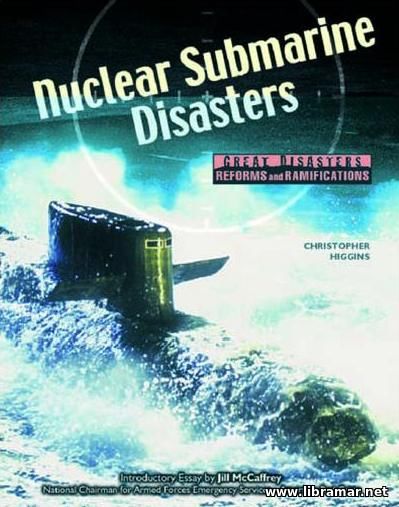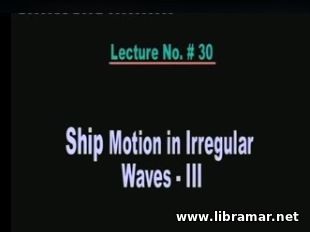Ship Launching Methods
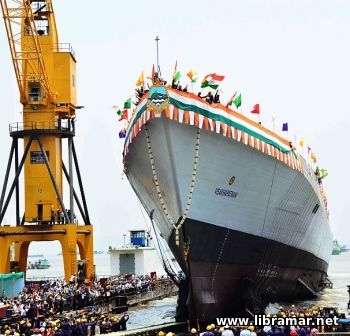
End Launching
The vessel is ordinarily launched from the building position. The vessel's weight is transferred from the keel block, bilge crib and shoring building supports to the launching cradle. The cradle is supported on one or more ground ways which extend longitudinally under water. Attachments between sliding and ground ways prevent movement of the former. Restraining attachments may be burn off sole plates or triggers, release of which allows the cradle-supported vessel to slide down the ground ways under the influence of gravity and enter the water. As the stern acquires buoyancy, it lifts, and when this happens the ship pivots about its fore poppet. Checking of the sternward motion may be required to prevent grounding of the vessel on an opposite bank or shoal.
Side Launching
If the vessel is supported by a translation system, on arrival in the launching position the vessel's weight is 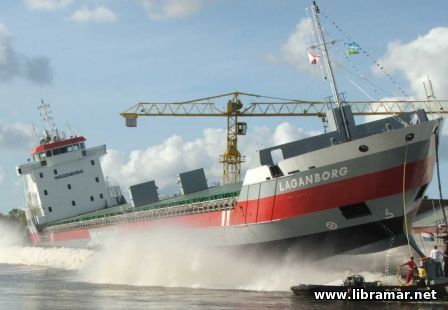 transferred to the sliding ways or sleds resting on ground ways perpendicular to the vessel's centerline. If the vessel is built in the launching position, its weight is transferred as described above for end launching.
transferred to the sliding ways or sleds resting on ground ways perpendicular to the vessel's centerline. If the vessel is built in the launching position, its weight is transferred as described above for end launching.
Ground Supported and Floating Platform
The platform, which is essentially a floating drydock, is ballasted to rest on a horizontal underwater pile-supported grid, or in another version, has one side or one end of the platform temporarily connected to, and aligned with, the shore. The vessel is moved onto the platform, the inshore wing walls of the platform being temporarily removed if the vessel is moved transversely. Alignment between shore side and platform rails, tracks or ways is maintained by the relative fixity of platform deck and shore. If only side or end support is provided, the platform must be progressively dewatered as the vessel is moved on to it to keep the platform deck horizontal and aligned vertically. Even if the platform has the overall support afforded by a grid, progressive dewatering may be required to reduce piling loads if a heavy vessel is being moved onto the platform. With the vessel centered on the platform, any removed wing walls are reinstalled and ballast tanks are dewatered to float the platform clear of any submerged or above water supports. The platform is moved to a dredged area of enough depth for it to operate in a conventional floating drydock mode and submerge sufficiently to float the vessel being launched.
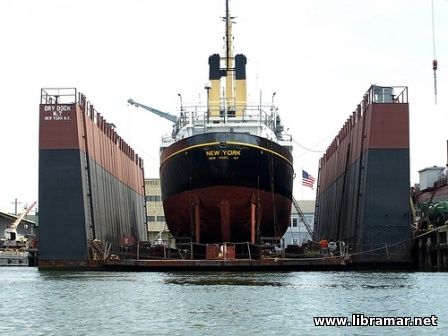 Floating Dry Dock
Floating Dry Dock
Varying deformations due to changes in solar radiation, air and water temperatures and varying loads, as well as the absence of a horizontal reference plane, makes a floating drydock unsuitable for the new building of vessels of any great size or weight.
Ground Supported Trimmable and Non-trimmable Platform Lift
The platform is supported on both sides and can be raised and lowered vertically by means of steel wire ropes and winches or chain cables operated by hydraulic rams or windlasses with wildcats. Winch or windlass controls are such that the platform can be moved in a horizontal position or can be lowered to a trimmed position to approximate the afloat trim of the vessel being launched. The platform and surrounding shipyard decking are provided with a translation system for longitudinal and/or transverse movement onto or off the platform. The non-trimmable is identical to the design just described except that the platform remains horizontal with no trimming.
Graving Dock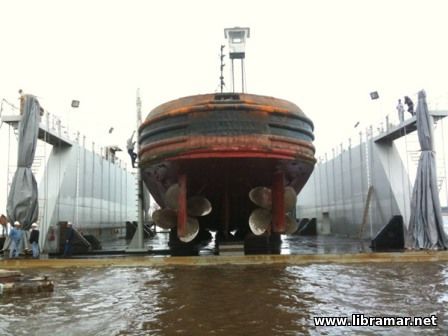
The vessel is supported during construction by keel, side and bilge blocks, and shores stepped on the level, reinforced concrete floor of the graving dock. The vessel is launched by controlled flooding of the dock.
Four Bar Linkage Ground Supported Platform
A platform at ground level and parallel to the shore is sup¬ported by vertical, or nearly vertical, struts pinned at their upper ends to platform inboard and outboard edges and at their lower ends to foundations on the basin bottom. After the vessel has been moved onto the platform, mechanical triggers restraining the platform are released and the four bar linkage system results in the upper ends of the struts describing arcs so that the platform swings outshore and downward to deposit the vessel in the water.
Marine Railway
Both end haul and side haul marine railways can be used for new building launching if the vessel is built over the railway or if it 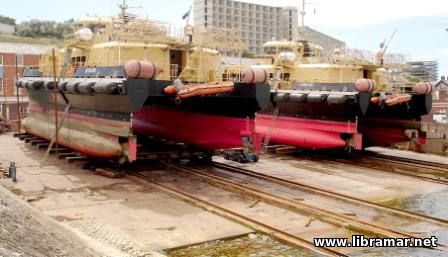 can be moved onto the railway. Launchings can be controlled or run free.
can be moved onto the railway. Launchings can be controlled or run free.
Piggy-Back Launching
The deck of a barge-like vessel can be used as a building berth or launching slip for another vessel. If the former, both vessels can be launched as one unit. In the case of the latter, the vessel to be launched, if an offshore jacket for example, may have been built ashore and then moved horizontally onto the deck of the supporting vessel. Depending on relative sizes, configurations and weights of the two units, the supporting vessel can be ballasted and trimmed for a float off or sliding end launching or can be ballasted and heeled for a sliding side launching.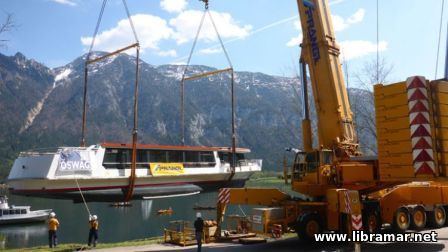
Heavy-Lift Crane Launchings
One or more heavy-lift cranes with the necessary outfit of spreader beams, steel wire rope slings and lifting eyes on, or bottom straps for, the vessel to be launched provide a means of launching relatively small vessels.
Airbags
Have a look at this animation below, showing the launching of the ship by means of the airbags - this method is also very popular. A winch holds a newly built vessel in place during installation of the airbags between the ground and hull, then the airbags are inflated and the pulling force is decreased step-by-step, enabling the mobilization of the ship towards the water. The connection of the vessel to the winch will be released at some point and the vessel will be launched with the assistance of launching bags and gravity force.
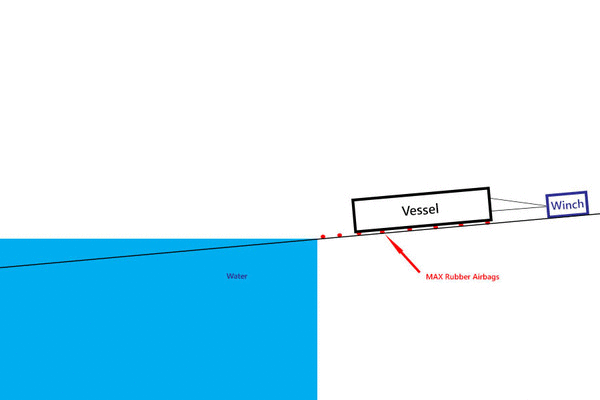
The "Read Later" function allows you to add material to this block with just one click. Just click on the icon and read the articles that interest you at any convenient time.
